Loft Insulation Grant
A big chunk of the heat you pay for escapes straight through the roof if your loft is not properly insulated. In many homes, it can be as much as a quarter of all heat lost. That means higher bills, colder rooms in winter, and a home that never feels as comfortable as it should. The good news is that government-backed grants are available to cover the cost of upgrading your loft insulation.
At Free Energy Savings, we guide homeowners, landlords, and tenants through the whole process. From the first eligibility check to arranging a free survey and installation, everything is handled for you. There are no confusing forms or hidden costs. Just a clear, straightforward route to making your home more efficient.
If you are wondering whether you qualify, checking only takes a few minutes. And if you do, the installation is usually completed in a single afternoon.
Apply Now For A Free Loft Insulation Grant
Fill out the form below to take advantage of the free loft insulation grant.
By submitting this form, you consent to us contacting you by phone, SMS, or email regarding your ECO4 Free Boiler Grant application. We will not use your details for unrelated marketing. See our Privacy Policy for more. You can opt out at any time.

3 Step Eligibility Process

Complete Online Form
Fill out our quick online form to apply for your loft insulation grant.

Get a Survey
Schedule a free home survey to assess your property’s current insulation and energy needs

Get a Loft Insulation Grant
Receive a grant for brand new loft insulation at no cost.
Who Qualifies for a Loft Insulation Grant?
Not every home is eligible for free or part-funded loft insulation, but the rules are straightforward once you know how the schemes work.
ECO4 Scheme
ECO4 is designed for households on low incomes or receiving certain benefits. To qualify, your home usually needs an EPC rating of D to G. If you meet the criteria, ECO4 can often cover the full cost of loft insulation and sometimes other upgrades too.
Qualifying benefits include:
- Universal Credit
- Pension Credit
- Income-based Jobseeker’s Allowance (JSA)
- Income Support
- Income-based Employment Support Allowance (ESA)
- Working Tax Credit
- Child Tax Credit
If someone in your household receives one of these, there is a strong chance you will qualify.
GBIS Scheme
The Great British Insulation Scheme has wider eligibility. You do not have to be on benefits, but your home generally needs an EPC rating of D or below and fall within Council Tax bands A to D in England, or A to E in Scotland and Wales. GBIS often provides partial funding, meaning you may be asked to contribute to the cost of installation.
LA Flex
Some local councils also offer flexibility under ECO4, known as LA Flex. This allows them to approve grants for households that fall just outside the main criteria, often due to health conditions or slightly higher income levels.
Loft Insulation Grant Schemes Comparison
| Feature | ECO4 | GBIS |
|---|---|---|
| Main focus | Low-income & benefit households | Wider eligibility |
| EPC rating required | D–G | D or below |
| Property bands | No banding restriction | A–D (England), A–E (Scotland/Wales) |
| Level of funding | Often full funding | Partial funding in most cases |
Where Do You Fit?
You don’t need to know the ins and outs of every scheme, that’s where we come in. At Free Energy Savings, we check which pathway you qualify for and guide you through the process, with minimal paperwork on your end.
What Is a Loft Insulation Grant?
Loft insulation is a simple but effective upgrade. It works by trapping heat inside your home with a thick layer of insulating material laid across the loft floor or under the roof. Without it, warm air rises and escapes, leaving you with a house that feels draughty and energy bills that climb higher every year.
A loft insulation grant is funding provided under government schemes to cover some or all of the cost of this upgrade. At the moment, there are two main routes: ECO4 and the Great British Insulation Scheme (GBIS).
- ECO4 focuses on helping households on low incomes or receiving certain benefits. If you qualify, it often covers the full cost of installation, meaning you pay nothing at all.
- GBIS has a broader reach. You do not need to be on benefits to qualify, but the funding is usually partial, so you may be asked to contribute to the cost.
Both schemes exist for the same reason. Loft insulation is one of the quickest and most cost-effective ways to cut energy waste. By improving homes across the UK, the government can help reduce fuel poverty while also working toward national Net Zero targets.
In plain terms, the grant gives you access to professional insulation without the high upfront cost. You end up with a warmer, more efficient home, and the country takes a step closer to reducing its carbon footprint.
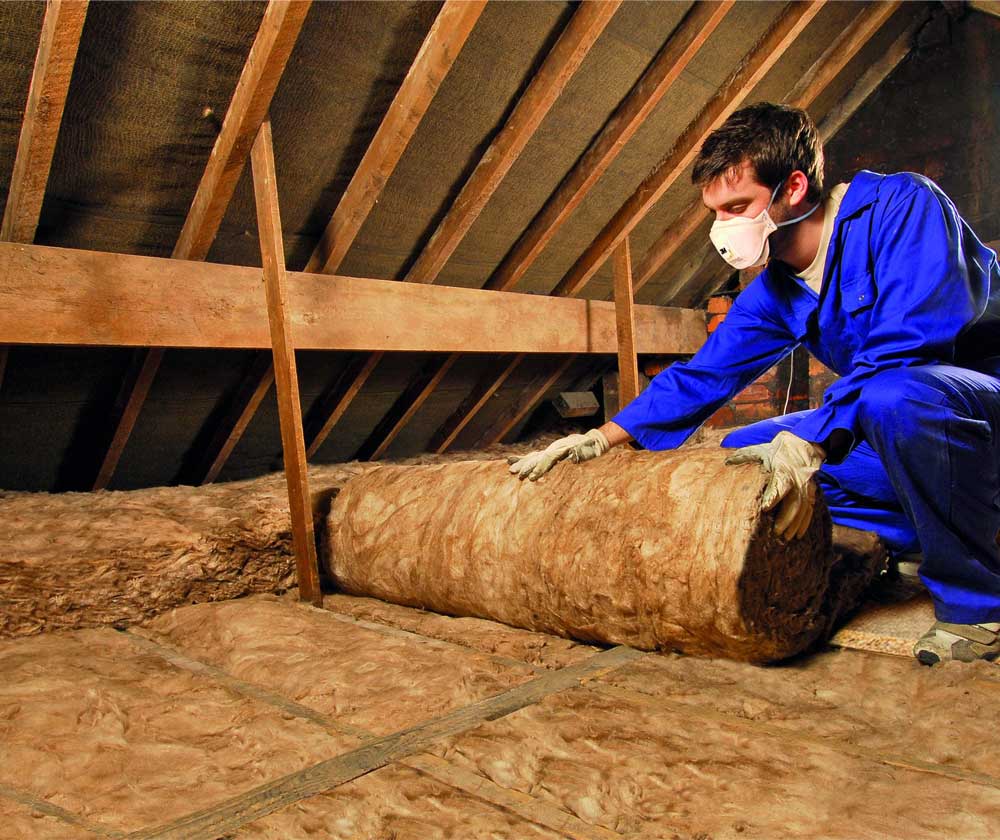
Why Loft Insulation Is Important
If your loft is not properly insulated, you are likely paying to heat the air that simply escapes through your roof. In fact, around 25% of a home’s heat can be lost this way. That wasted energy shows up in higher bills and a house that never feels quite as warm as it should.
Installing loft insulation makes a big difference. The Energy Saving Trust estimates that topping up insulation to the recommended depth can save households anywhere from £200 to £580 a year, depending on property type. Detached homes usually save the most, but even smaller terraces see a noticeable drop in costs.
The benefits are not just about money. Insulation keeps your home warmer in winter and cooler in summer, helping to regulate temperature all year round. It also improves your property’s EPC rating, which can make a difference if you plan to sell or let your home in the future. Many buyers now look closely at energy performance, and insulation is one of the simplest upgrades to improve it.
Another plus is lifespan. Once installed, loft insulation can last for 40 years or more, so you only need to do it once. And because it works across detached, semi-detached, terraced houses and bungalows, it is one of the most flexible and cost-effective energy improvements you can make.
Many homeowners put it off because they think the process will be disruptive or expensive. In reality, most installations are completed in just a few hours, and with the grant funding now available, the cost can be fully covered.
For a relatively small step, loft insulation makes a huge impact on both comfort and costs.
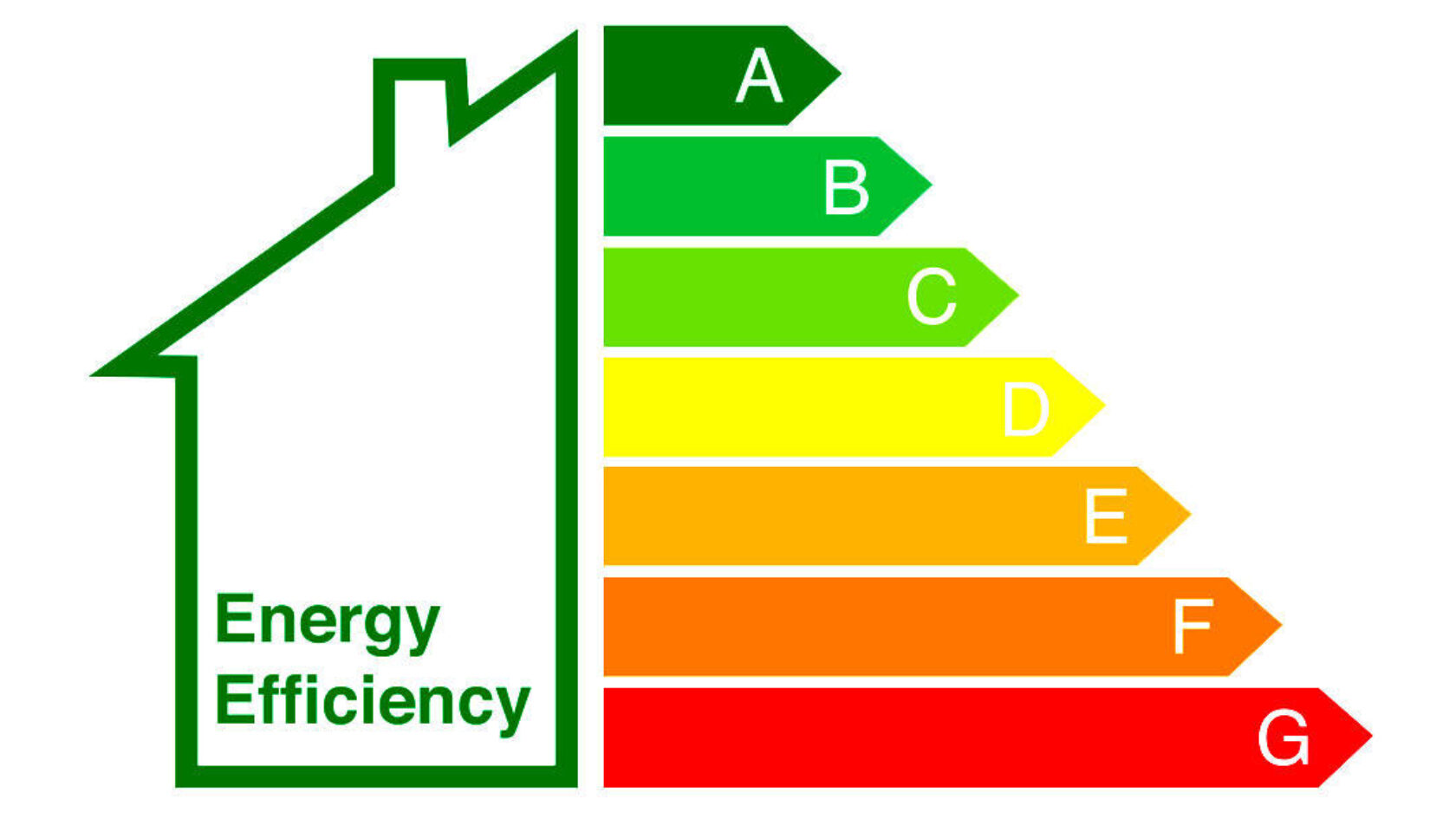
How Much Can You Save With Loft Insulation?
The savings from loft insulation depend on the size and type of your home, but the impact is noticeable for almost every household. According to the Energy Saving Trust, here is what you could typically expect:
- Detached house: up to £580 a year
- Semi-detached: around £300–£340 a year
- Terraced house: about £250–£310 a year
- Bungalow: between £300–£445 a year
These are not one-off savings. They repeat year after year, so over the lifespan of the insulation — which can be 40 years or more — the total financial benefit is substantial.
The other important factor is energy prices. While no one can predict exactly how bills will change in the future, insulation acts as a form of protection. The more efficient your home is, the less exposed you are to price rises, because you need less energy to keep your home at a comfortable temperature.
Many homeowners are surprised at how quickly the upgrade pays for itself in terms of savings. With government grants covering the cost, or at least most of it, the financial case becomes even stronger. You get a warmer, more comfortable home while spending less on energy month after month.
For something that can usually be installed in just a few hours, loft insulation provides one of the best returns of any home improvement.
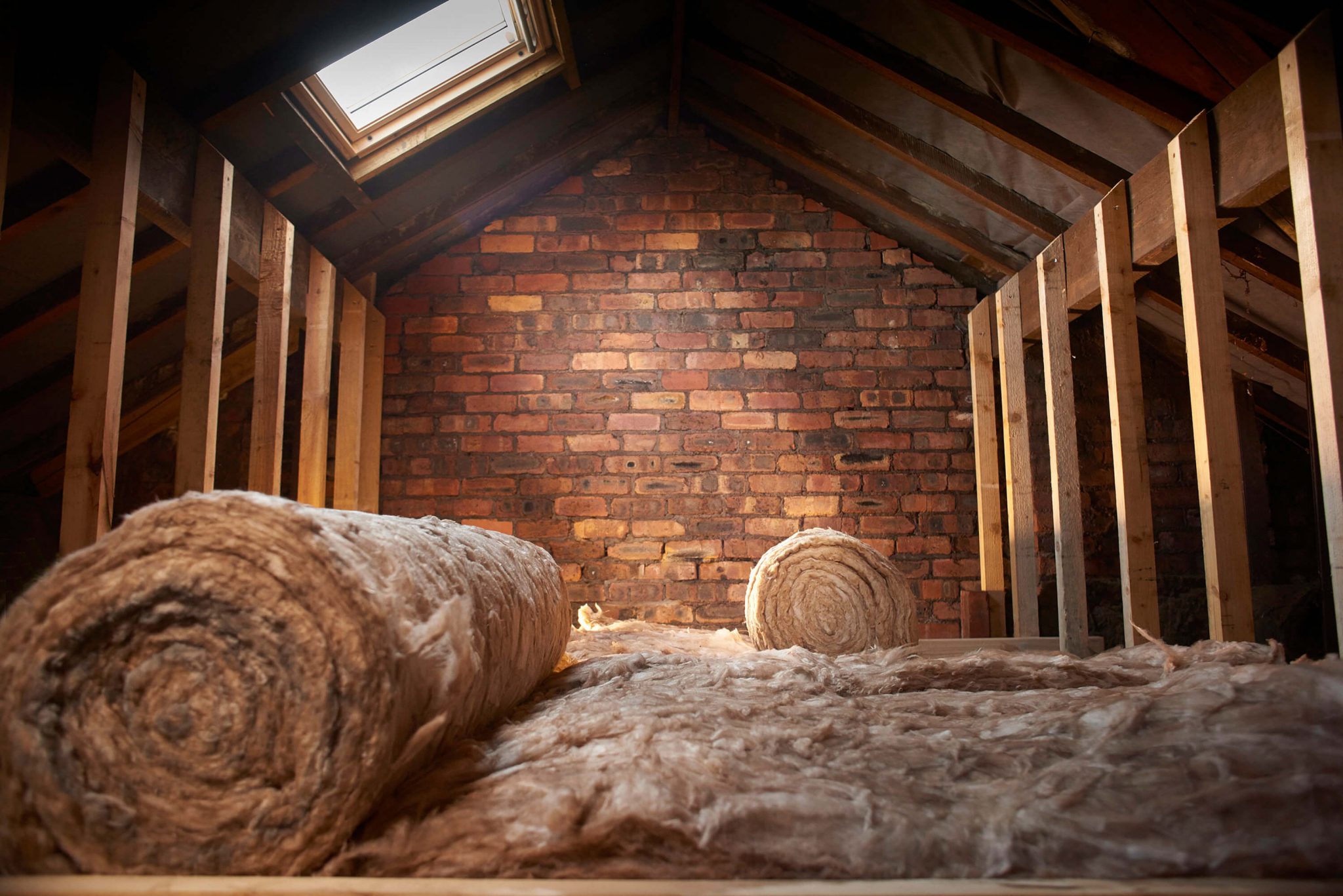
What’s Included in the Loft Insulation Grant?
One of the biggest concerns people have is whether a “grant” really covers everything. The good news is that loft insulation funding through ECO4 or GBIS is designed to take the hassle out of the process. Here is what is typically included:
- Free property survey – a qualified surveyor will visit to check your current insulation levels and confirm what is needed.
- Professional installation – new insulation is fitted to the recommended depth (usually up to 270mm) using high-quality materials.
- All labour and materials – you do not need to source anything yourself. Everything is arranged for you.
- Quality checks – once the work is done, there is a post-installation check to ensure it has been fitted correctly.
- Certified installers – only government-approved installers are used, giving you peace of mind the job is done properly.
- Warranties and aftercare – you receive the same protection and assurances as if you had paid privately.
If you qualify under ECO4, the scheme can often cover the full cost, so you pay nothing at all. With GBIS, the funding is usually partial, so you may be asked to contribute toward the cost, but it is still heavily discounted compared to paying outright.
Either way, the aim is the same: a warmer, more efficient home delivered without the stress of arranging everything yourself. Free Energy Savings takes care of the process from start to finish, so all you need to do is confirm your eligibility and book your survey.
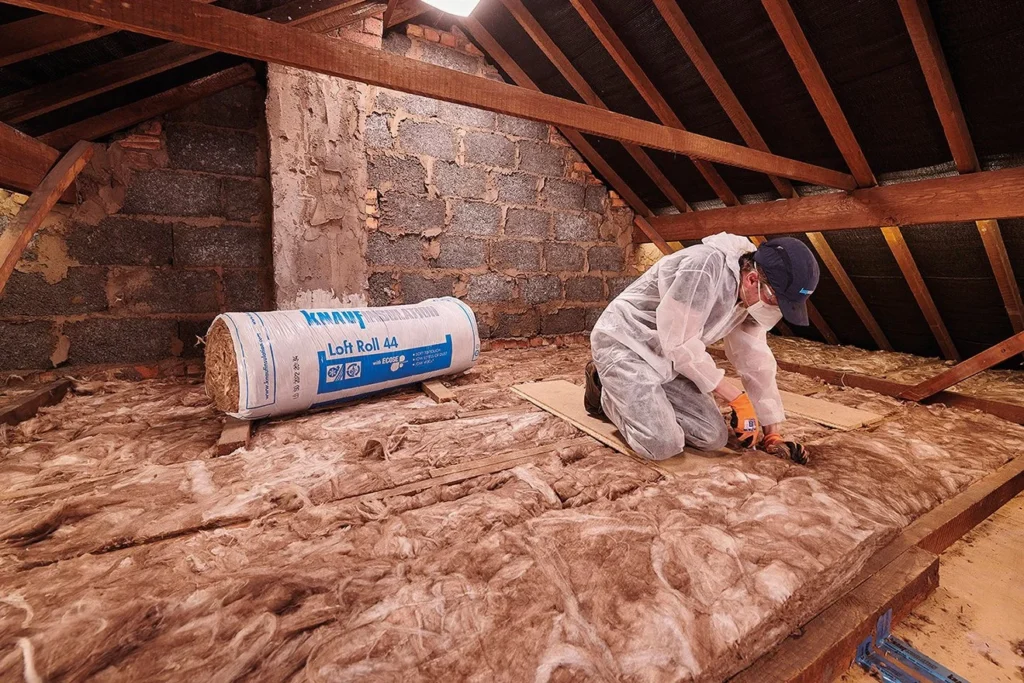

Types of Loft Insulation
Not all lofts are the same, which is why there are two main approaches to insulation. The right type depends on how you use your loft space.
Cold Loft Insulation
This is the most common method. Insulation is laid across the floor of the loft, between and over the joists. It works by keeping the heat inside your living areas while the loft itself remains cooler. Cold loft insulation is cost-effective and ideal if your loft is not used for storage or living space.
Warm Loft Insulation
If you use your loft regularly — either for storage or as an extra room — warm loft insulation may be recommended. In this method, insulation is fitted under the roof rather than just at floor level. This keeps the loft itself warmer and makes the space more comfortable to use.
Which One Do You Need?
You do not need to decide this yourself. During the free property survey, a qualified surveyor will look at your home and recommend the most suitable option. In many cases, homeowners are surprised to learn they can insulate the loft in a way that still allows for storage or future conversion.
Whichever method is used, both provide the same outcome: reduced heat loss, lower bills, and a more comfortable home.
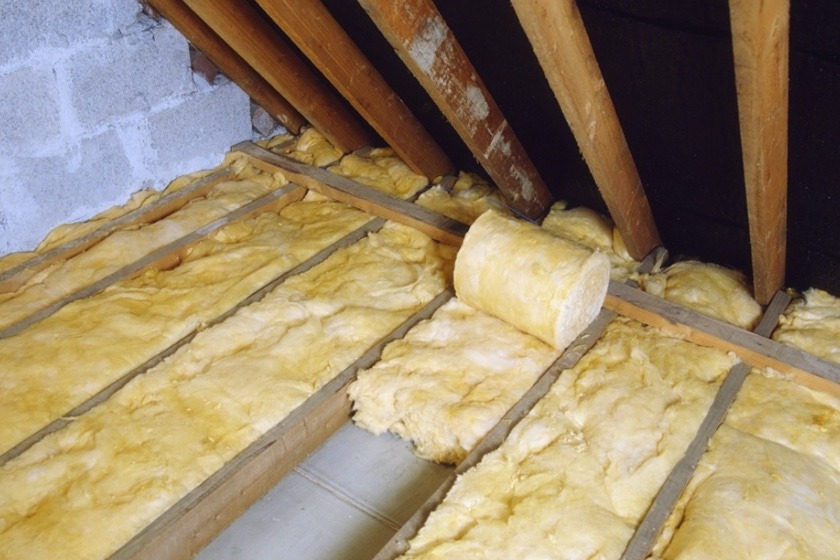
Can I Get a Loft Insulation Grant If I Already Have Some Insulation?
A lot of households already have some insulation in place, but that does not necessarily mean you are excluded from funding. In fact, many grants are designed to top up or replace insulation that is below the recommended depth.
The current standard is around 270mm. If your insulation is thinner than this, patchy in certain areas, or showing signs of wear and tear, you could still qualify for a grant. This is especially common in older homes where insulation was fitted decades ago, often at half the thickness now considered effective.
During your free property survey, the installer will measure the depth and condition of your existing insulation. If it falls short, they will recommend a top-up or full replacement. In most cases, the grant will cover this work in the same way it would for a completely uninsulated loft.
It is also worth knowing that insulation materials degrade over time. Even if your loft was insulated years ago, it may not be performing well today. The grant gives you a chance to bring it back up to standard without a big out-of-pocket cost.
So, do not rule yourself out just because you already have insulation. You may still be eligible, and the savings can be just as significant.
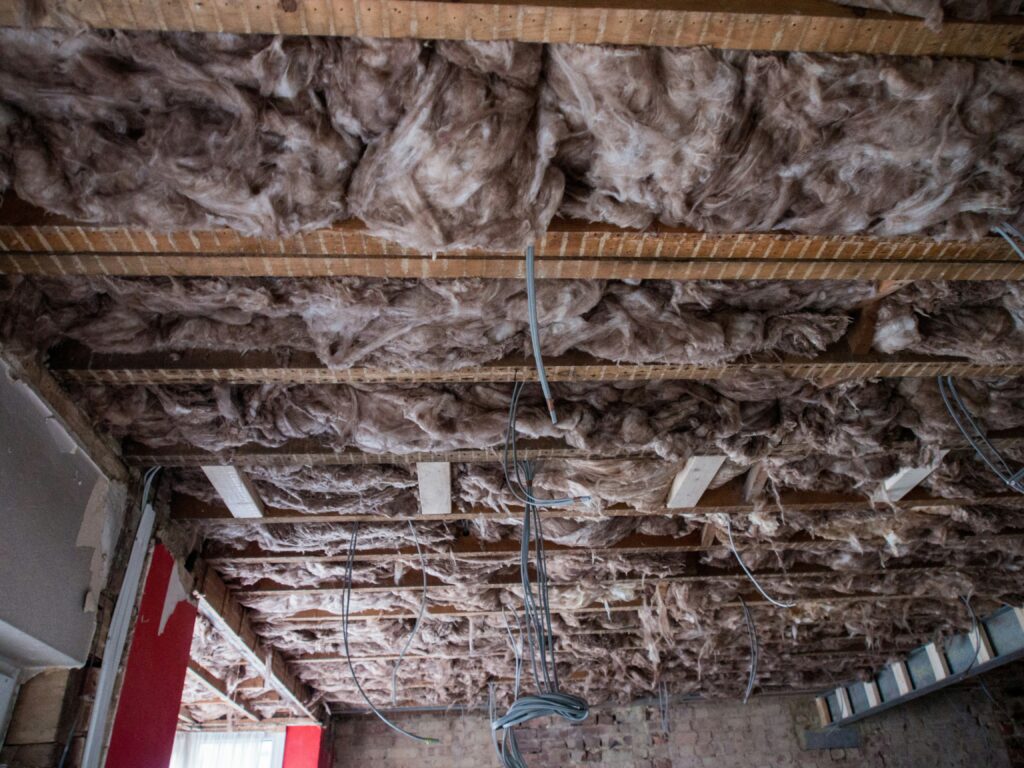
Our Application & Installation Process
Applying for a loft insulation grant might sound complicated, but in practice it is simple. We handle the paperwork, surveys, and installer arrangements so you do not have to. Here is how it works:
- Check your eligibility
Start online or by phone. It only takes a few minutes to see if your household is likely to qualify under ECO4 or GBIS. - Free property survey
If you are eligible, we arrange a no-obligation survey. A qualified surveyor visits your home to assess your loft and confirm what insulation is required. - Application submitted
We complete and submit the grant application on your behalf. You do not need to fill in long forms or chase responses. - Installation day
A certified installer carries out the work, usually within a few hours. Most households are surprised at how little disruption there is. - Quality assurance check
After installation, a check is made to ensure everything has been fitted correctly and meets government standards. - Aftercare and warranty
You receive full documentation, warranty information, and peace of mind that your insulation is guaranteed.
From start to finish, the process normally takes 2 to 4 weeks. The actual fitting is completed in a single visit, often in one afternoon.
At every stage, Free Energy Savings manages the details. That means no confusing steps, no unexpected costs, and no chasing contractors. Just a straightforward route to a warmer, more efficient home.
Why Choose Free Energy Savings?
There are many companies offering energy upgrades, but not all of them specialise in government-backed grants. At Free Energy Savings, this is our focus. We work only with ECO4 and GBIS funding, so we know the schemes inside out and can guide you smoothly through the process.
Here is what sets us apart:
- Trusted by thousands of UK households who have already improved their homes through us.
- Nationwide coverage, so wherever you live, we can arrange surveys and installation.
- Fast-track applications to save time and avoid unnecessary delays.
- No-obligation surveys, giving you clarity before you commit to anything.
- Certified installers only, meaning every job is carried out to government-approved standards.
- End-to-end support, so you are never left chasing paperwork or wondering what happens next.
Our role is simple: to make your journey stress-free. From the first eligibility check to the final installation, everything is managed for you. We know many households are cautious about schemes that sound “too good to be true.” That is why we are transparent at every stage and give you clear answers up front.
By choosing Free Energy Savings, you are not just applying for a grant. You are getting a reliable partner who will make sure the work is carried out properly, on time, and without hidden costs.

Ready to Save with Loft Insulation?
Upgrading your loft insulation is one of the simplest and most effective ways to cut energy waste. With government funding through ECO4 or the Great British Insulation Scheme, the cost is often fully or partly covered. That means a warmer home, lower bills, and improved energy efficiency without the big upfront expense.
For most households, the benefits are clear:
- Lower heating bills that repeat every year.
- A more comfortable home in both winter and summer.
- Higher EPC ratings that can boost property value.
- Long-lasting protection, with insulation that works for 40 years or more.
At Free Energy Savings, we make the process simple. From checking eligibility to arranging a survey and managing the installation, everything is handled for you. There are no confusing forms, no hidden costs, and no unnecessary delays. Just a clear path to a warmer, more efficient home.
It only takes a few minutes to check if you qualify. Once approved, installation is usually completed in a single afternoon.
Frequently Asked Questions
Yes. This is one of the most common misunderstandings. While ECO4 is designed mainly for people on means-tested benefits, GBIS has much wider eligibility. If your property has an EPC rating of D or below and falls within the right council tax band (A–D in England, A–E in Scotland or Wales), you could still get help with the cost of loft insulation even if no one in your household claims benefits.
Think of ECO4 as focused support for lower-income households, while GBIS is a broader scheme for the general public. ECO4 often funds 100% of the work, while GBIS provides partial support. Both are part of the government’s strategy to tackle fuel poverty and cut carbon emissions.
Savings depend on your property type. A detached home can save up to £580 a year, a semi-detached around £300–£340, and a terraced property between £250 and £310. Bungalows are also strong candidates, often saving £300–£445 a year. Over decades, the savings add up to thousands of pounds.
Yes. Both landlords and tenants can apply. Tenants will need the landlord’s permission before installation goes ahead. For landlords, improving insulation can help raise EPC ratings, which are now a key requirement for renting out properties.
Most loft insulation jobs are completed in just a few hours. In many cases, installers are in and out within the same day. The disruption is minimal: once it is done, the only thing you notice is your home staying warmer for longer.
You may still qualify. If your current insulation is below the recommended 270mm depth, patchy in certain places, or has degraded over time, a top-up or full replacement can be funded. Older homes in particular often have outdated insulation that no longer performs well.
Yes, usually. Installers need clear access to the loft floor to lay the insulation. If your loft is used for storage, it is best to move items out before the survey and installation. The installer can advise if only partial clearing is needed.
Yes. Loft insulation improves the efficiency of your property, which is reflected in a higher EPC rating. This can also make your home more attractive to future buyers or renters.
Yes. Under ECO4, many households qualify for a “whole house” approach. That means you could receive support not only for loft insulation but also for measures such as cavity wall insulation, external wall insulation, or a boiler replacement. Combining measures can maximise savings and make your home much more efficient.
Loft insulation typically lasts 40 years or more. Once installed, it continues working quietly in the background with little to no upkeep required.
No routine maintenance is needed. The only thing to keep in mind is not to squash or compress the insulation if you use the loft for storage. Keeping it fluffed up at the correct depth is what makes it effective.
You will notice the difference almost immediately. Many households report that their home feels warmer within days of installation, and the savings show up from the very next energy bill cycle.
Loft insulation grants can cover detached houses, semis, terraces, and bungalows. Flats are sometimes eligible, but it depends on the building layout and whether the loft space is accessible.
Even if you do not qualify under ECO4 or GBIS, we can still provide advice on the most cost-effective way to insulate your loft. In some areas, councils run their own support schemes (sometimes through LA Flex), which may still offer partial help.
Not necessarily. With cold loft insulation, the floor is insulated between and over the joists. You may still be able to use boarded sections for storage, though it is important to check with your surveyor. If you want to use your loft more fully, warm loft insulation (under the roof) may be recommended.
The government funds loft insulation because it is one of the most effective ways to cut energy waste. Homes across the UK are responsible for a large share of carbon emissions. By insulating lofts, fuel poverty is reduced, bills are lowered, and national climate targets move closer.

What Our Customers Have To Say
Read More Of Our Reviews On Trust Pilot
We’ve had some bad experiences with installers in the past, but Free Energy Savings was a breath of fresh air. They were helpful and patient, answering all of our questions about the ECO4 scheme and making sure we understood how it worked. The installation was done quickly and professionally, and the team was extremely respectful of our home.
- Jessica B
We were a bit unsure about how the ECO4 grant worked, but Free Energy Savings made everything so simple. The team explained every detail of the grant and the benefits from a new boiler installation. When it came time for the installation, they arrived right on schedule and worked hard to get everything set up. What impressed me most was the attention to detail….
- Amelia L
Free Energy Savings exceeded all of our expectations. From the moment we contacted them, they were responsive and informative. The team helped us through the paperwork for the ECO4 grant, which was a big help since we had no idea where to start. The installation crew was friendly, professional, and fast. It’s been a couple of months now, and we’re already…



